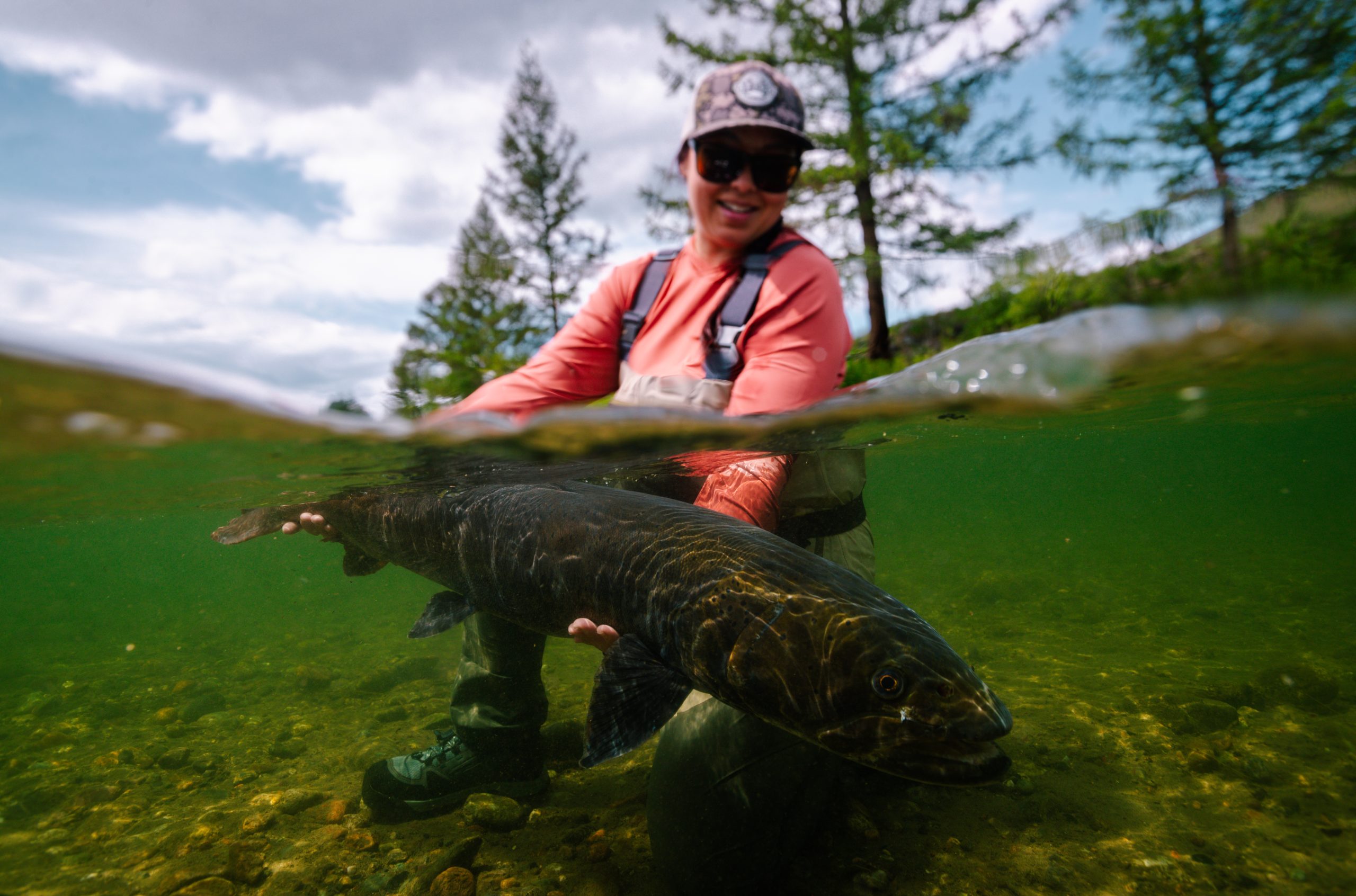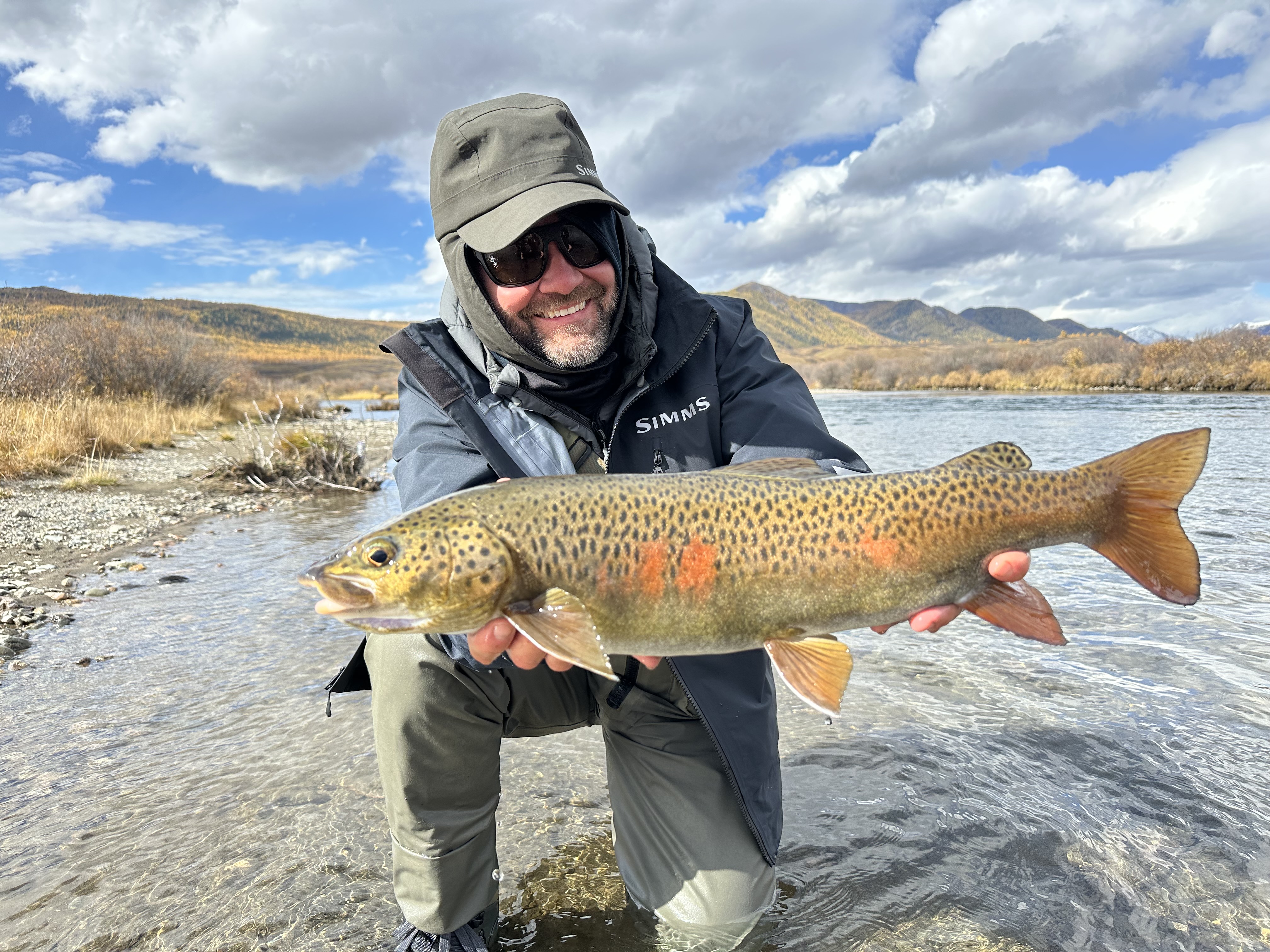The Lenok (Brachymystax lenok) is another iconic fish of the Tengis River, often found alongside taimen and grayling — forming the “three jewels” of Mongolia’s northern rivers. Here’s a detailed overview:
Species Overview
- Scientific name: Brachymystax lenok (two forms exist: sharp-snouted and blunt-snouted)
- Appearance: Golden-brown to olive body, with dark spots and faint red markings along the sides; deeply forked tail and a strong, trout-like build.
- Average size: 40–60 cm (16–24 inches), occasionally over 70 cm.
- Diet: Opportunistic feeder—mayflies, caddisflies, small crustaceans, and even smaller fish. During summer, they strike aggressively at surface insects and streamers.
Habitat in the Tengis
The Tengis River provides ideal lenok habitat—cold, clean, well-oxygenated mountain water with diverse structures:
- Found in deep pools, runs, and along undercut banks.
- Prefer gravel and cobble substrates, where insect larvae are abundant.
- In early summer, they move into shallow riffles to feed and spawn; later in the season, they retreat to cooler, deeper sections.
Spin Fishing Tackle
For anglers who prefer spin gear, lenok are an equally rewarding target — fast strikes, strong runs, and acrobatic jumps make them a favorite.
- Rod: Light to medium-light spinning rod (6’–7’)
- Reel: 1000–2500 size reel with smooth drag
- Line: 4–8 lb monofilament or 0.12–0.18 mm braid with fluorocarbon leader
- Lures:
- Small spoons (Mepps Aglia, Blue Fox Vibrax, Abu Garcia Toby – 5–12 g)
- Spinners in silver, gold, or copper finishes
- Small minnow plugs or crankbaits (Rapala Countdown, Yo-Zuri Pins Minnow)
- Technique:
- Cast slightly upstream and retrieve with a slow, steady motion
- Focus on pool edges, submerged rocks, and riffle transitions
- In deeper water, allow the lure to sink before retrieving
Lenok strike hard and often leap during the fight, making light spinning tackle an absolute joy on the Tengis.
Fly Fishing for Lenok
- Flies: Larger dry flies (Stimulator, Chubby Chernobyl, Royal Wulff), streamers (Woolly Bugger, Zonker), and nymphs (Prince, Hare’s Ear).
- Tackle: 4–6 wt rods; 9 ft leaders with 4X–5X tippets.
- Technique: Swinging streamers through deep runs, or drifting big attractor dries along seams. Lenok often leap acrobatically when hooked.
- Best season: June to late September, with prime fishing in mid-summer when insect life peaks.
At Taimen Lodge
Lenok are a key part of the Tengis headwater expeditions, providing fast paced fishing between taimen sessions. Guests often describe lenok as “the Mongolian trout” stunningly colored, strong fighting, and abundant in clear pools just steps from camp.
They’re perfect for light tackle dry-fly action and ideal for photography in crystal clear water a balance of sport and serenity unique to northern Mongolia.






